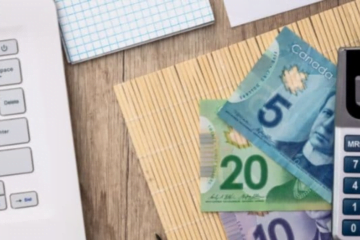Declaring bankruptcy is a big decision, but it isn’t one that you should shy away from. Life is notorious for coming up with the unexpected; a promotion, an illness, a pregnancy or a break-up.
Sometimes the unexpected gives us hope; sometimes it throws us into turmoil. And sometimes it can send our finances into a tailspin.
If you are struggling with overwhelming debt, bankruptcy might be the right next-step for you.
Bankruptcy gets a bad rep, but for certain debt situations, it can be a godsend. In most cases, declaring bankruptcy will wipe away all of your unsecured debt. It is the least expensive, quickest way to get out of debt, making it the ideal solution for people who do not have secure long term income, are expecting a change in their family needs, or who need to get out of debt quickly for any variety of reasons.
It gives you immediate protection from your creditors, known as a ‘Stay of Proceedings.’ This means that:
- Creditors and collection agencies can no longer contact you
- All legal proceedings that creditors have against you must stop and
- Wage garnishment will stop
Additionally, every debtor who declares bankruptcy is required to complete two credit counseling sessions. These sessions will identify the root of your debt problems and provide you with the tools you need to keep yourself out of debt in the future.
If there are no special circumstances, most first-time bankruptcies will be discharged in just nine months.
There are a few things to keep in mind before you declare bankruptcy.
- A bankruptcy will be marked on your credit score for six years after your discharge.
- Some assets may be seized to repay your creditors. However, you are allowed to keep your basic assets, including your personal effects and household furnishings, RRSP’s, registered pensions, some equity in your home, and any tools you need for work, including a motor vehicle if used to get to and from work.
- If you have surplus income, based on the federal government’s standards for a family your size, you will be required to pay 50% of the surplus to your Trustee for the benefit of your creditors.
- A bankruptcy does not relieve you of student loan debts less than 7 years old, fines and penalties of a court, child support and alimony payments, or debts that are the result of fraud or misrepresentation.
There Are Alternatives to Bankruptcy
There are a few other insolvency options that may fit your financial situation.
Consider a Consumer Proposal. You may qualify if you are less than $250,000 in debt. This insolvency solution works best if you have a steady, secure income, and can afford to make some payments over a period of time, up to 5 years, or have non-exempt assets to protect.
You and your Trustee work out what you can afford to pay, and over what period of time. Then your Trustee contacts your creditors and the creditors vote for or against the proposal. Once the proposal is accepted by a majority of the creditors, it is legally binding on all of your unsecured creditors.
A Consumer Proposal affects your credit score for 3 years after the proposal is completed, and it does not affect your assets. It also provides a Stay of Proceedings, protecting you from collection practices by creditors.
In order to find out which solution is best for you, you need to contact a Licensed Insolvency Trustee (LIT). Give LCTaylor a call today to book your free, confidential consultation.
















